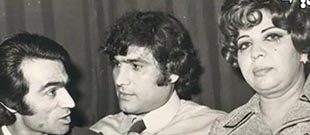The development of these stores must be understood in the context of the White Revolution’s goals. Initiated in 1963, the White Revolution was a state-led modernization campaign that aimed to redistribute land, enfranchise women, promote literacy, and foster economic growth. One of its key challenges was balancing rapid development with social equity. The new retail infrastructure—especially in the form of subsidized stores and protein stalls—was intended to bring the fruits of modernization to rural communities and marginalized urban populations.
These initiatives were part of a broader shift in the Iranian economy toward centralized planning and state intervention. Under Hoveida, the government established numerous state-owned enterprises and regulatory bodies, aiming to control inflation, stimulate industrial growth, and reduce dependence on oil revenues. The 1975 store opening came during a particularly ambitious phase of economic expansion, buoyed by high global oil prices that had drastically increased Iran’s revenues.
Still, the top-down nature of these reforms led to mixed results. While economic indicators showed growth and modern infrastructure became more visible, underlying social and political tensions continued to simmer. Many Iranians felt excluded from decision-making processes, and corruption within the state apparatus undermined public trust. Hoveida, despite his personal asceticism and integrity, was increasingly viewed as the embodiment of a detached technocratic elite.
The contradictions of this era—between growth and inequality, between reform and repression—would ultimately culminate in the revolution of 1979. Hoveida’s own fall from power foreshadowed the unraveling of the entire regime. In August 1977, amid mounting protests and political unrest, the Shah replaced Hoveida with Jamshid Amouzegar. Hoveida was reassigned as Minister of the Royal Court, a largely ceremonial role, signaling his political marginalization.

